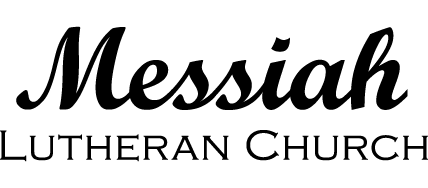08 Dec SUNDAY, DECEMBER 8, 2024
What is a baptism of repentance for the forgiveness of sin anyway? At best, it sounds like some sort of trade, a deal where a person must do “A” to qualify for “B”. It would be hard to argue against this idea: that forgiveness of sin requires a prerequisite and according to today’s gospel reading, that prerequisite is a baptism of repentance.
Well, we all have an idea of what baptism is since John was baptizing people in the river Jordan. So, let’s take a look at repentance. The word itself literally means to do a 180o turn, to dramatically alter one’s behavior, and in some cases, repentance involves performing a set of actions with the aim of changing the condition of a person’s heart. In fact, repentance can even change the condition of more than one person’s heart.
According to Rabbi Steve Leder, “There are four steps to being forgiven and if you do these four, you deserve to be forgiven, and if you don’t do these four, you don’t. The first step is: Stop doing the behavior.” You must cease and desist committing the offensive act. Stop doing the thing that’s wrong, the thing that causes offense or injury.
Second: “You must verbalize the sin outloud and feel true regret.” In other words, confess. Name the thing you did that caused offense or injury. Third: “Go to the person you offended and say, ‘I was wrong.’ Don’t just say, ‘I’m sorry.’ Specifically state what you did.”
And fourth: “Create scaffolding around yourself so the sin will not happen again.” In other words, take steps to prevent the sin from happening again. Make it virtually impossible for you to be tempted in the same way or to succumb the way you already did. https://www.nbcnews.com/dateline/video/how-to-forgive-and-seek-forgiveness-rabbi-steve-leder-weighs-in-1437494851791?featureFlag=true
These ideas did not originate with Rabbi Steve Leder or the Jewish culture. They originate in the word of God. In the Book of Malachi we are given an explanation for how a baptism of repentance for the forgiveness of sin comes to be. The gospel passage reads, “The word of God came to John, the son of Zechariah, in the wilderness.”
“The word of God came to John.” Creating a path or way possible for humans to be forgiven was God’s idea. It’s always God doing the work during any type of baptism and always God supplying what’s necessary for humans to gain personal righteousness. Don’t forget that.
The process goes something like this: God’s Holy Spirit is responsible for convicting a person and bringing about conscious awareness of sin; then the Spirit makes it possible for a person to name their sin and confess it either privately or publicly; finally the grace of God works upon the human soul and psyche so it may believe and receive God’s forgiveness so that they truly feel as though their record of guilt has been expunged.
According to the prophet Malachi, God initiated a process that works like a refiner’s fire and fullers’ soap. We all know that a refiner’s fire burns off impurities to reveal what remains, a pure substance like silver. A fuller’s job was to “care for newly shorn wool or woven garments, washing and cleansing them with pressure.” Can you imagine the amount of elbow grease, foot stomping and concentrated soap it takes to remove lanolin from wool? Lanolin’s greasy waxiness quality is much like sin, not easily broken down or penetrated.
Malachi says that God will purify and refine his people until they present offerings to the LORD in righteousness. What makes an offering pleasing to the LORD? Righteousness. The LORD will not be pleased with less or care for offerings presented in any other state. The key concept is that righteousness is the operative quality necessary to please the LORD.
So how does the operative quality of righteousness work in the process of a baptism of repentance for the forgiveness of sin? Along comes John as a precursor to Jesus. John goes into all the region around the Jordan, proclaiming a baptism of repentance for the forgiveness of sins. We’ve touched on that.
The passage continues, as it is written in the book Isaiah quoting the prophet of the same name, “The voice of one crying out in the wilderness:‘Prepare the way of the Lord, make his paths straight.” Now we are no longer talking about God making a path or way forward for human beings, but human beings making a path for God’s only Son, our Lord. Isaiah says, “Every valley shall be filled, every mountain and hill shall be made low. The crooked shall be made straight, the rough ways made smooth; and all flesh shall see the salvation of God.’ ”
No longer will only those able to meet the prerequisite terms or conditions be able to see the salvation of God, not only those born as a Hebrew or living in the Ancient Middle East, but all flesh shall see the salvation of God. How does seeing salvation differ from acquiring forgiveness of sin?
A person is saved once. Salvation is the work of none other than Jesus Christ. He does what humans could never do: acquire a level of righteousness that makes us not only acceptable, but pleasing. He gives us a portion of himself from his own right standing before God.
So how might we prepare the way of the LORD and make straight his paths? In this region, there are few straightaways and of the few that exist, I am frequently and speedily passed by impatient drivers in other cars whether the center yellow line is solid or not.
Anywhere you go, there are curves, ups and downs. From here to Harrisburg, you have no choice but to slow down for a couple of hairpin curves at the bottom of Peter’s Mountain or prepare yourself for several sets of rumble strips on 147. If you don’t prepare, you run the risk of ending up in the woods, over the side of the mountain, or scared out of your wits when the rumble strips catch you by surprise.
John’s mission: to facilitate a baptism of repentance for the forgiveness of sins was his way of helping people prepare to see salvation. It was God’s way of drawing attention to the danger of unconfessed, repeated sins or sin blocked from consciousness. Repentance helps one stay alert and be prepared, to become aware of how sin involves both long steep inclines and dangerous descents. Don’t you agree that in life, there are few straightaways without angle or pitch?
But the way of the LORD, the way of salvation, is the shortest distance between two points. It’s the way a crow flies, from point A to point B. It is the most effective means to arrive and works perfectly regardless of terrain or a variety of structures built on land.
The way God proposes for salvation to occur is straightforward. God is the civic engineer of the Dept. of Transportation and the Director of Public Works regarding forgiveness. God paves the way himself and sends John, the son of Zechariah out as a prototype surveyor. He helps to assess and determine the relative position of people and their sinfulness to God. He helps them to see where they stand in relation to the horizon, a fixed dependable point of reference always able to orient a person to place and time.
A surveyor measures angles and distances using devices that incorporate a compass or level. As many of us have discovered when erecting a swing set or shed on sloping ground, preparing a level area is mandatory. What John does is scope out level ground. He’s making preparation for the next step in God’s plan of salvation.
John procures several tons of gravel in the form of repentant human beings so that the structure of salvation is built on a solid foundation: on hearts softened and prepared to hear God’s word, ready to receive God’s Son the Messiah, able to welcome the baby Jesus foretold of.
Today’s psalm wasn’t a psalm, at all. It was a passage from the Book of Luke where he also alludes to what God has done. He states that the LORD came to set people free by raising up a mighty Savior born of the house of David. Through the prophets, God promised to save, show mercy, and set people free. This was the holy covenant, the oath given.
For what purpose was the oath given? So that people would be free to worship without fear, so that people would appear as holy and righteous before God. How would this be possible? Only if a prophet of the Most High went before the LORD to prepare the way. And that way was to give them knowledge of salvation by forgiveness of their sins.
But shouldn’t we be confused by this? Forgiveness is not the same as salvation. We are saved once, but need forgiveness time and time again. If forgiveness of sin comes via a baptism of repentance, why did Jesus have to die? And why didn’t Jesus beam down to earth at the age of 33 years old and complete the work begun by John then?
Because as Luke states, “In the tender compassion of our God, the dawn from on high shall break upon us to shine on those who dwell in darkness and in the shadow of death, and to guide our feet into the way of peace.” John came to help people realize that they were dwelling in darkness and in the shadow of death, that their feet were not headed toward peace.
Jesus became human to walk the path with us, so that when we experience wonderful, frightening, or difficult things in life, we will give them our full attention and speak with him, that we will be encouraged to keep on making the effort to gain additional wisdom and aim at maintaining whatever skills we learn.
Let us pray. God, you always make a way and come to where we are. Thank you for giving your word to prophets and for allowing all flesh to see salvation. We cherish your tender compassion and ask that you continually break into our world, shining light on those who dwell in darkness and in the shadow of death, guiding our feet into the way of peace. In your holy name we pray, Amen.


